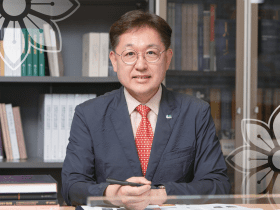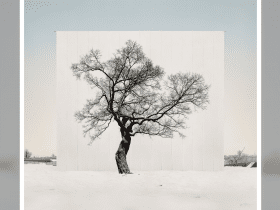“Seeing Korea Heritage” with NRICH Ambassador Lee Myungho
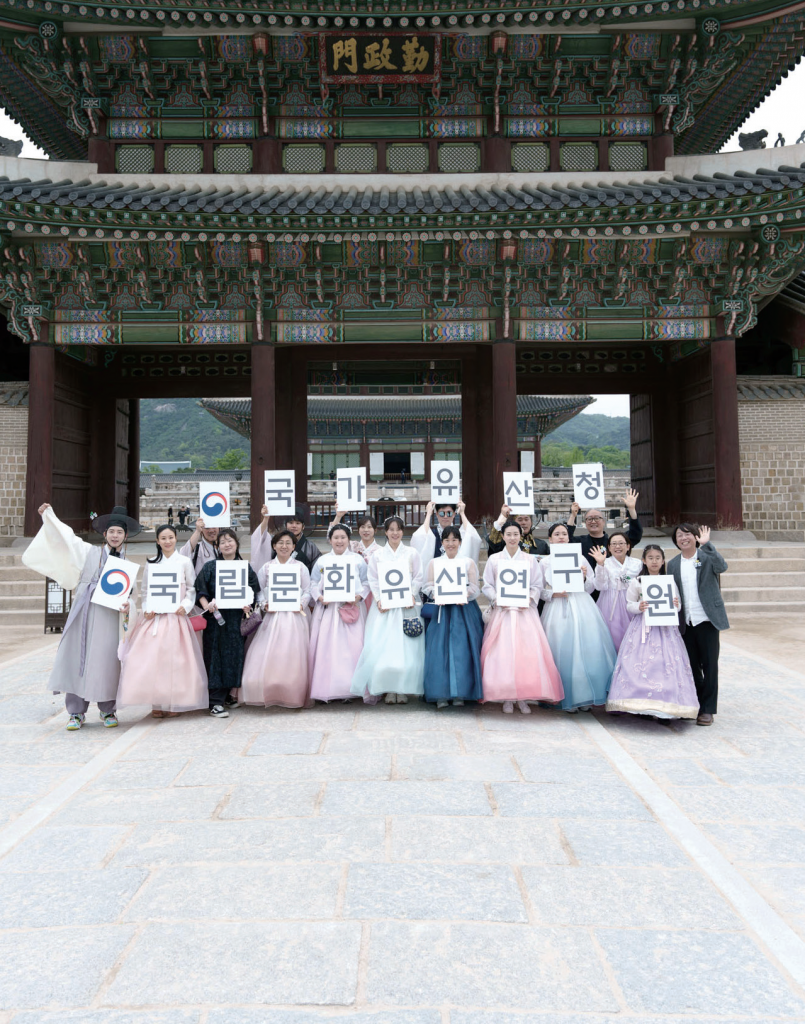

This April, cultural heritage enthusiasts and photographer Lee Myungho, an ambassador for the National Research Institute of Cultural Heritage, explored Gyeongbokgung Palace amidst a gentle spring breeze. We embarked on a spring outing with the participants of “Seeing Korea Heritage,” an event commemorating the launch of the Korea Heritage Service after the enactment of the Framework Act on Korea Heritage.
Gyeongbokgung Palace is one of Korea’s premier tourist destinations, drawing over 1 million visitors annually. A symbol of Joseon history as well as an iconic Seoul landmark, Gyeongbokgung Palace is well known to many. However, it harbors numerous hidden stories within its walls. Recently retitled from cultural property to cultural heritage, efforts are underway to rediscover its intrinsic value and unearth its hidden history.
Tranquility at Gyeongbokgung Palace: A Private Encounter
Gyeongbokgung Palace is typically bustling with visitors from around the world, speaking various languages and capturing moments dressed in wearing hanbok against the backdrop of the main structure, Geunjeongjeon Hall. However, every Tuesday, the palace falls silent. Participants of the “Seeing Korea Heritage” program recently had the rare privilege of wandering through the palace’s empty corridors and delving into its rich history. The journey commenced under the guidance of Park Injoo, a cultural commentator, at Hyangwonjeong Pavilion and Geoncheonggung, located on the northern grounds of Gyeongbokgung Palace: “Most people who come to Gyeongbokgung Palace focus mainly on Geunjeongjeon Hall. Today, we will take a look at the back areas, where the king and queen stayed. You will see a different side of the palace.”
Heungseon Daewongun, King Gojong’s father, undertook the extensive reconstruction of Gyeongbokgung Palace after it was destroyed during the Japanese invasions of Korea in 1592 and remained inaccessible for over two centuries since. This ambitious rebuilding effort required significant manual labor and sparked considerable public discontent. Hyangwonjeong Pavilion was not part of Heungseon Daewongun’s original reconstruction plans. It was not until 1873, ten years into King Gojong’s reign, that the construction of both Hyangwonjeong Pavilion and Geoncheonggung was announced, prompting concerns from his subjects of renewed public discontent. King Gojong assuaged these concerns, pledging the usage of personal funds for the construction. Once completed, these two structures played a pivotal role in King Gojong’s assertion of independence from his father and solidified his reign. Geoncheonggung later rose to historical prominence as the first building at Gyeongbokgung Palace to be have electricity installed and, tragically, as the site of Empress Myeongseong’s brutal murder by Japanese assassins—a pivotal event etched deeply into Joseon’s history.
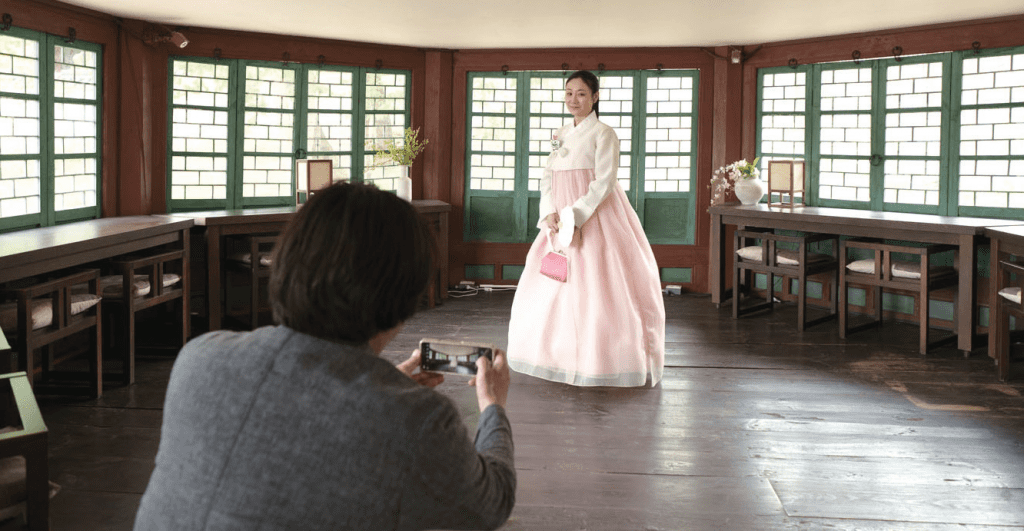

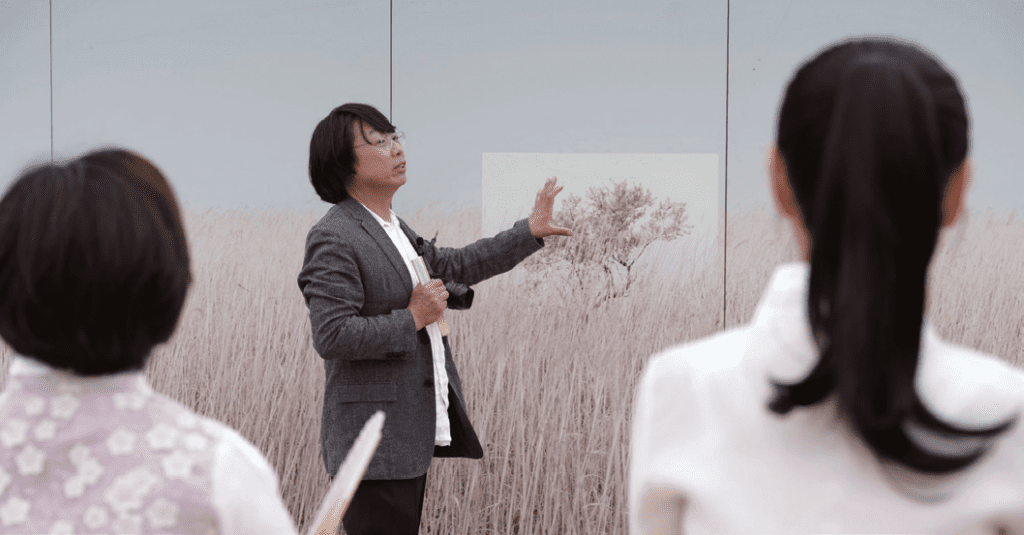

A Fresh Perspective on Cultural Heritage
Our journey continued on to Jibokjae, King Gojong’s personal study—a striking example of modern architecture featuring glass windows and red bricks. Beyond a scholarly sanctuary, Jibokjae also served as a diplomatic venue for hosting foreign envoys. Participants savored the rare opportunity to peer into the study, typically off-limits to the public but currently accessible until October.En route from Jibokjae to Heungbokjeon, an excavation site was cordoned off; but rather than the standard grey fencing, this fence displayed a photograph by Lee, of a solitary tree gracefully punctuating a serene field of reeds. This display added its own unique meaning on Korea Heritage without harming the scenery inside Gyeongbokgung Palace.Reflecting on this work, Lee remarked, “There is beauty in everything in the world, yet we often overlook such value. This work aims to provoke deeper contemplation and appreciation of such beauty.” At Heungbokjeon, participants also learned about Mungyeongjeon, currently under excavation. Jeong Yeoseon, a researcher from the Seoul National Research Institute of Cultural Heritage, shared insights into Mungyeongjeon’s significance: “Mungyeongjeon was home to the king and queen’s ancestral tablets, but its exact structure and location have long been shrouded in mystery. Through this excavation, we’ve finally uncovered its location and layout.”
Exploring the Depths of Cultural Heritage
Among Gyeongbokgung Palace’s most renowned structures stands the Gyeonghoeru Pavilion, built atop a vast square pond and historically used for state banquets during significant national events or visits by foreign envoys. Participants ascended to the pavilion’s second floor, which is accessible by reservation until October 31, and enjoyed the panoramic views and the spring ambiance, much like the kings of Joseon once did.As our spring excursion coincided with the transition to the Korea Heritage system, the event culminated with a round of discussionsabout the renaming of “Korea Heritage”. During the dialogue, Lee addressed the audience’s questions around the renaming with incisive clarity, underscoring the imperative reasons for this change in nomenclature.The term “cultural property” came into use during the Japanese occupation of Korea. Originally, the term “historical site” was used to refer to structures and ruins showcasing historical culture.However, Japanese influence led to the adoption of the term “cultural property,” a convention unique to Korea and Japan untilrecent times. The shift to the “Korea Heritage” paradigm, and the classification of such heritage into cultural, natural, and intangible subtypes according to UNESCO guidelines, is prompting a profound reconsideration of the value of our Korea Heritage, its preservation, utilization, and future prospects. As we have always coexisted and will continue to be coexisting with our Korea Heritage, we look forward to a time when we fully realize the importance of preserving the Korea Heritage around us and passing it on to future generations, just like the work of Lee Myungho.




Mini Interview
Participants Kim Seyeon and Kim Jaeman
Jangchung-dong, Jung-gu, Seoul


Q.What inspired you to get involved?
Kim Seyeon: I was encouraged by my mom to participate.
Kim Jaeman: I signed up to create memories with our daughter, as suggested by my wife.
Q.What’s it like to be involved?
Kim Seyeon: Living in Seoul, I haven’t had many opportunities to visit Gyeongbokgung Palace, so this is a new and thoroughly enjoyable experience for me. The hanbok are especially beautiful.
Kim Jaeman: Wearing hanbok with my daughter and exploring our Korea Heritage has been an unforgettable experience for us both.
Participant Kwon Osung
Sangam-dong, Mapo-gu, Seoul


Q.What inspired you to get involved?
I’ve had a passion for Korea Heritage since childhood, collecting artifacts and running a YouTube channel dedicated to cultural heritage. When I saw this meaningful event on social media, I saw it as a great opportunity to further engage with my interests in Korea Heritage.
Q.What are your expectations for the name change?
Just as the change from gray to blue police uniforms initially felt unfamiliar but eventually became familiar, I hope the transition to terms like Korea Heritage and cultural heritage will become second nature and widely accepted as we use them more frequently.
Want to observe “Seeing Korea Heritage” in action?
“Seeing Korea Heritage” with photographer Lee Myungho, an NRICH Ambassador
Seeing Korea Heritage – A Special Conversation








